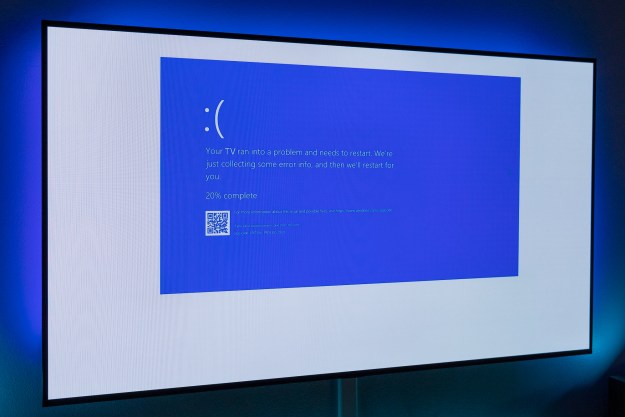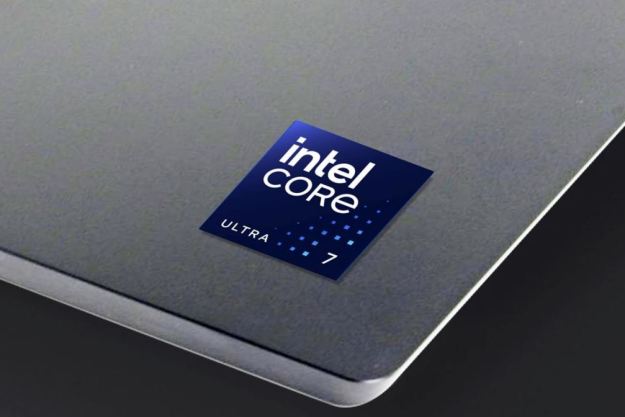Intel has talked a big game about its new 11th-gen processors. They’re faster, powered by artificial intelligence, and finally have decent integrated graphics. But if all you get are laptops that look and feel the same as last year’s, the impact won’t … well, have impact.
That’s what feels special about Intel’s partnership with MSI this year. The pair have unveiled the “Summit” series of thin-and-light laptops, a new venture for the gaming-focused company.
These new laptops are more than just a first for MSI, though. They also point to the future of what thin-and-light
Prototyping the future

When a new processor launches, Intel usually builds a reference model and shows it off to its device partners. It’s an example of what its new processors can do and highlights some of the features manufacturers can utilize in its new laptops. But with 11th-gen Tiger Lake, Intel took a different approach.
MSI was brought in as a partner early in the process to design and actually build this reference model. As early as CES 2020, where Tiger Lake was first announced, MSI and Intel were trading notes back and forth on these first Tiger Lake systems.
“We’ve been getting systems from them all along, in parallel with development boards,” Fredrik Hamberger told Digital Trends. He’s the General Manager of Premium and Gaming Notebooks over at Intel. “That allows us to do full system testing and usage experience. Whether it’s showcasing thin-and-light gaming, creation, or background noise cancellation in video calls. You really can’t do that with a generic board. You have to have a full system.”
For Intel, enabling system-level testing at a much earlier stage is key. Earlier reference models means delivering to other partners earlier. That’s more time to collaborate on designs and more time to move to 11th-gen faster.
This early reference model made by MSI ended up being the Prestige 14, an example of a super-thin, portable laptop, now with the power of Intel Iris Xe graphics under the hood. This Prestige 14 was one of the first Tiger Lake laptops to be shown off, taking advantage of the platform’s new capabilities. It could play games thanks to the Xe graphics, it featured faster storage thanks to the four lanes of PCIe 4.0, and it claims over 10 hours of real-world battery life.

But MSI had something completely fresh up its sleeve. A new brand and design that would help the company step out into a new market.
“As MSI began to design this system, we knew we needed a partner that could harness and highlight the years of innovation, performance, and leadership we have worked so hard to achieve,” said Clark Peng, vice president of the Notebook Product Management Division at MSI. “Together, we’re bringing to fruition a vision for next-gen platforms to the mobile market.”
This early partnership is also what would lead to something entirely new: The “Summit” series of laptops, the company’s first dive into the world of non-gaming, thin-and-light
Reaching the summit

At IFA, and just a day after Intel’s Tiger Lake launch, MSI has announced two laptops in its new line: The Summit E and the Summit B. These are
“We chose the name ‘Summit’ because it embodies a meeting of leaders, the pinnacle of capability and perseverance,” said Henri Chen, MSI’s Notebook Division chief design officer. “Its visual profile is informed by minimalist and modern design philosophies and is intended to appeal to the unique tastes of today’s business professionals. Our new logo takes a similar approach, with sharp, straight lines and characters that represent the look and feel of the line.”
It has a MacBook-like in its sense of style, but it fits in well next to laptops like the HP Spectre x360 and Dell XPS 13. From the chamfered edges to the thin bezels, it’s clearly meant to evoke an air of class and luxury.

“We probably meet face-to-face several times in a year,” Intel’s Fredrik Hamberger told Digital Trends, speaking of its close relationship with manufacturers. “We’ll do research, MSI will do research, we’ll talk to end customers. We went back and forth for months, wondering if this is the right expansion for MSI’s portfolio. Across consumer, creator, and gamer, we felt that with this platform with Tiger Lake-U, together with MSI’s platform, we could really deliver something unique.”
Many times, laptop manufacturers work on design concepts for months or even years ahead of launch. Lining up the timing of a design with the launch of an exciting new processor doesn’t always work out, which holds back the impact of both that laptop and new processors. But with the MSI Summit series, the stars aligned.
We were convinced that designing and offering new thinner and lighter products would be possible for consumers.
The Summit laptops are more than just a new look, of course. MSI says it’s that deep collaboration with Intel on its Tiger Lake platform that made the unique value proposition of these
“Based on the expected performance for Tiger Lake processors, we were convinced that designing and offering new thinner and lighter products would be possible for consumers, as well as be something that users would find appealing,” said Derek Chen, MSI’s notebook division global sales and marketing director.

MSI didn’t want to make compromises in performance, but still wanted to make these machines as portable as possible. So, just how small are they?
The more premium option with its 4K screen, the Summit E, is 0.67 inches thick and 2.86 pounds. Meanwhile, the Summit B has a 1080p screen, measuring at 0.63 inches thick and weighs 2.95 pounds. There are 15-inch versions of these laptops, as well as a Summit E13, which features a 360-degree hinge.
Now, these aren’t the thinnest or lightest laptops in the world, but given what these
The Summit B uses Intel’s new Iris Xe graphics, which Intel claims to be twice as powerful as last year’s Ice Lake Iris Plus graphics. Meanwhile, the Summit E uses even more powerful GTX 1650 Ti. That makes the Summit E14 one of the first 14-inch laptops to feature graphics quite this powerful.
The Summit laptops are interesting in themselves, but they reveal Intel’s hand in guiding its ecosystem and influencing the future of its platform.
Intel’s collaboration runs deep

Intel’s involvement in the end product has never been more hands-on. Through programs like Project Athena and Evo, Intel is guiding manufacturers toward the kinds of systems it wants to see now more than ever before. It’s even produced advanced form factors based on concepts such as foldable screens.
But in this example with MSI, it’s clear that Intel’s collaboration goes much further than certification or design ideation. It wants to work in tandem with device manufacturers to build better systems.
“Our engineering teams have worked as one engineering team to make sure that these systems, when they get out the door, bring the best of MSI and the best of Intel together with them,” said Intel’s Fredrik Hamberger. “We bring big organizations to bare on both sides to make sure they’re finely tuned. We take a very unique approach that’s a deeper collaboration than you’ll see pretty much anywhere else in the industry.”
The egalitarian nature of Windows PCs is its strength, with its endless range of options and choices. It’s what sets them apart from the MacBooks and Chromebooks of the world. But it can also open the door to products that don’t live up to Intel’s own standards. A single sour experience is sometimes all it takes to tarnish the entire ecosystem of Windows PCs in the eyes of a customer.
In the end, a tighter handshake between the internal components and the external hardware makes for a more unified and cohesive user experience. It’s a huge incentive behind the transition of the Mac over to Apple Silicon.
It’s a delicate tightrope that Intel is forced to walk. Hamberger emphasized that partnership, not control, was the goal of its collaboration.
“It stems from delivering better customer experiences,” said Hamberger. “How can we lift the ecosystem? That’s when we lean in on projects like this. It’s not for only these projects, but it also helps to lift the entire industry up.”
When the entire ecosystem rises, that’s a win for Intel.
Editors' Recommendations
- MSI has a new flagship PC that is absolutely gorgeous
- Intel may have a monster new CPU coming soon
- With the arrival of Core Ultra, a new era for Intel has begun
- This Intel gaming handheld could give the Steam Deck a run for its money
- Acer’s new gaming laptop bring Nvidia RTX 40-series GPUs under $1,000


